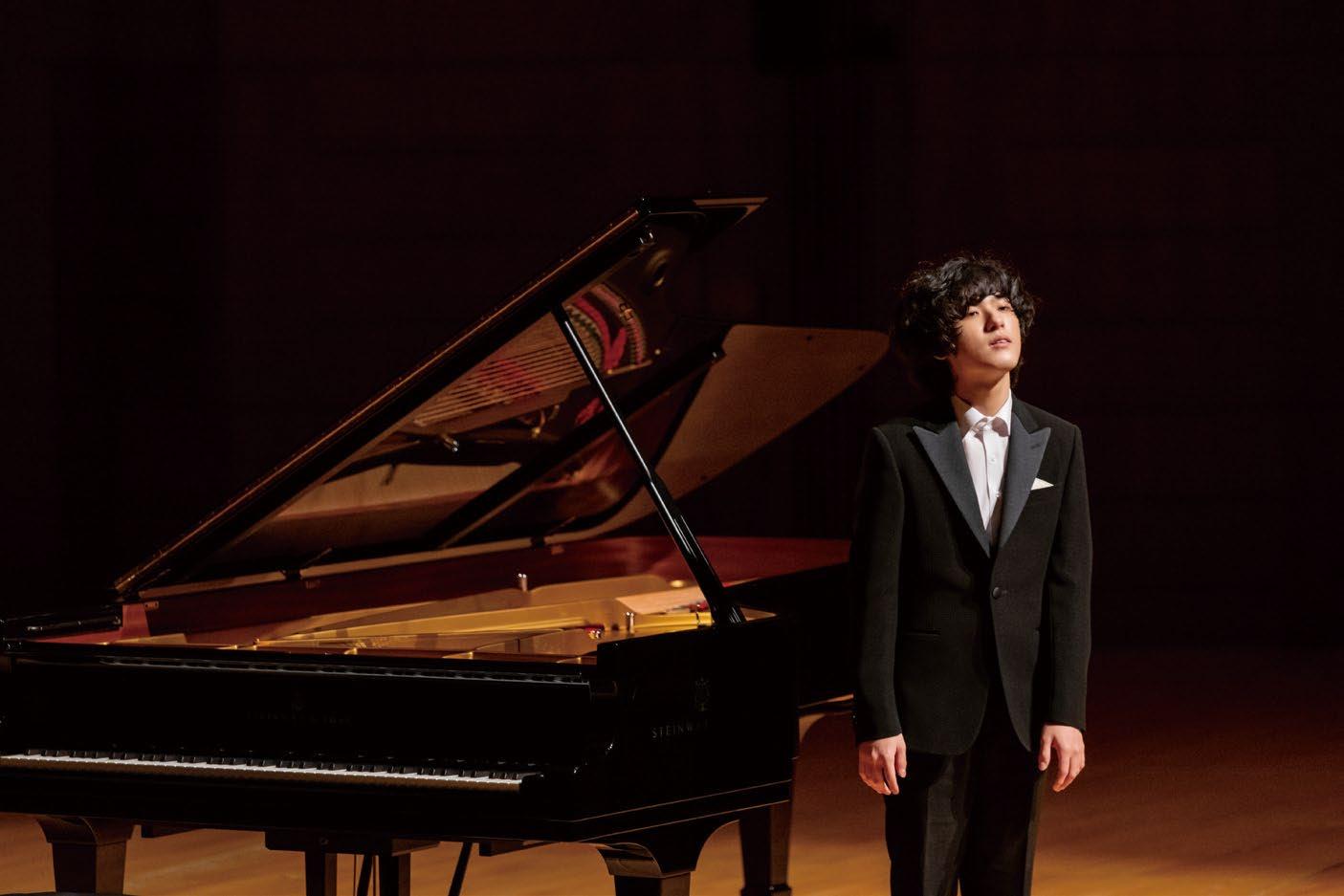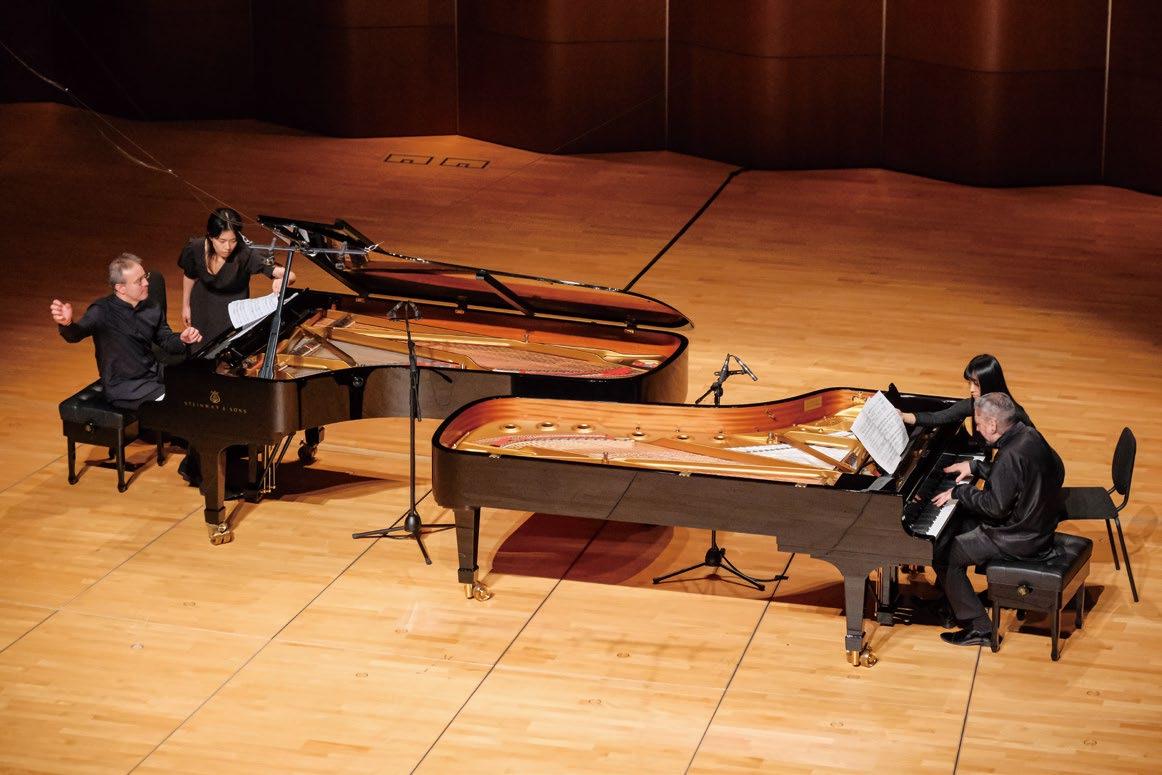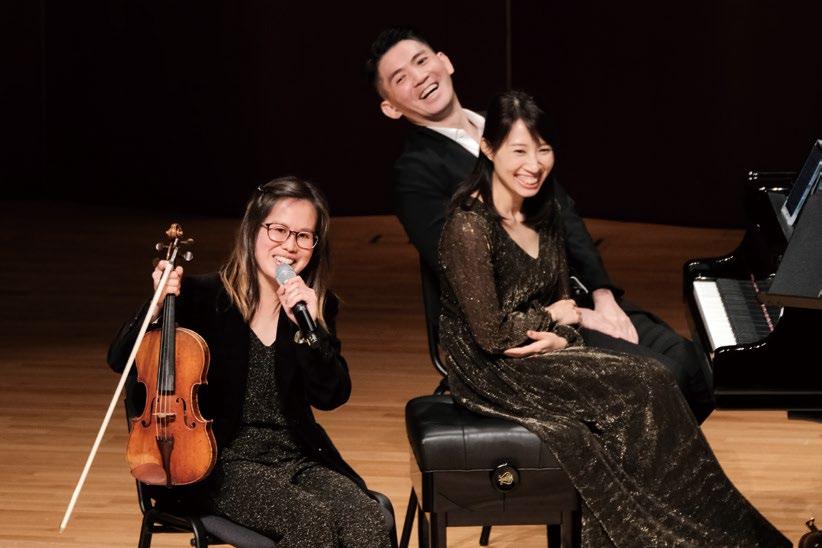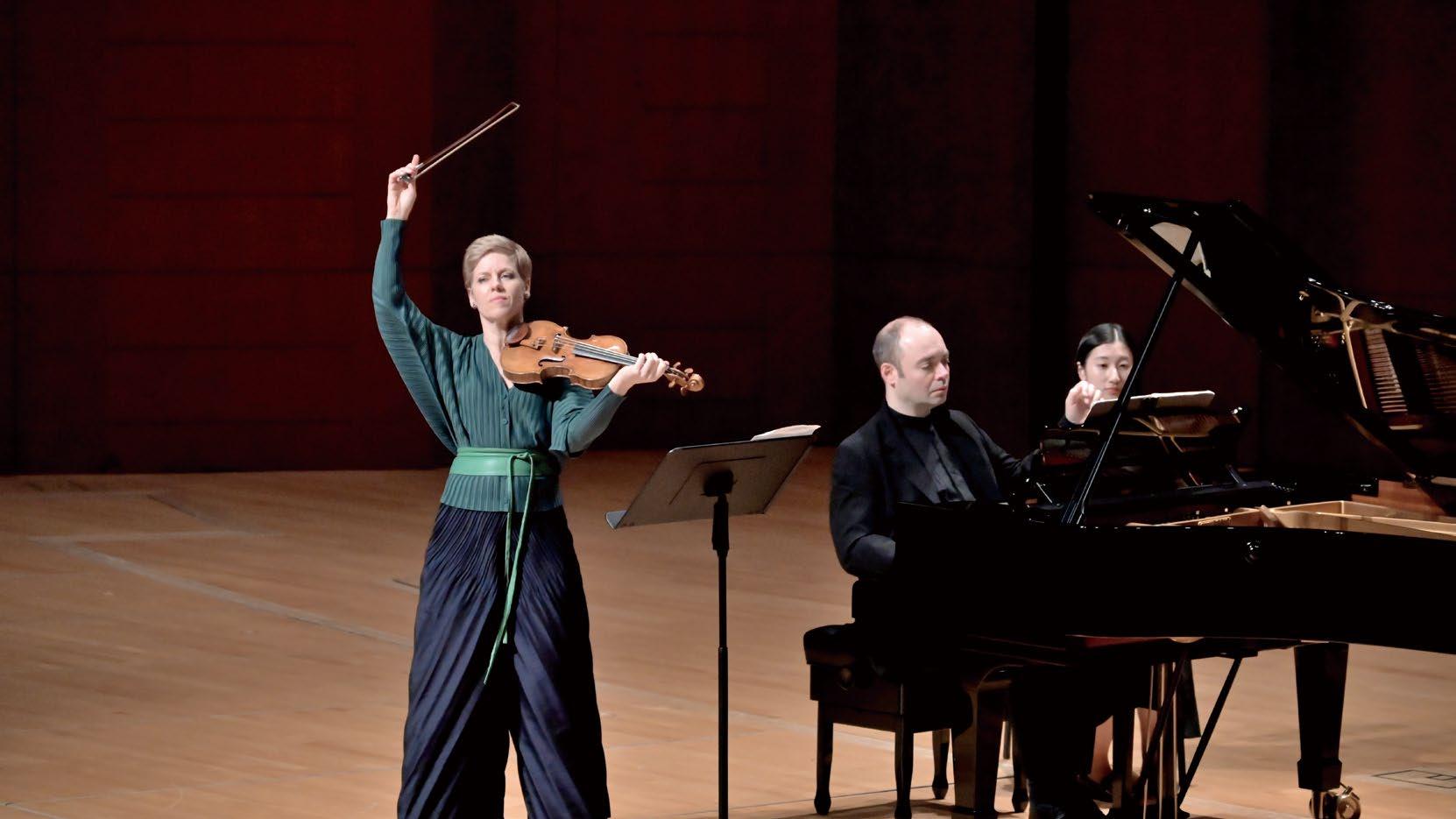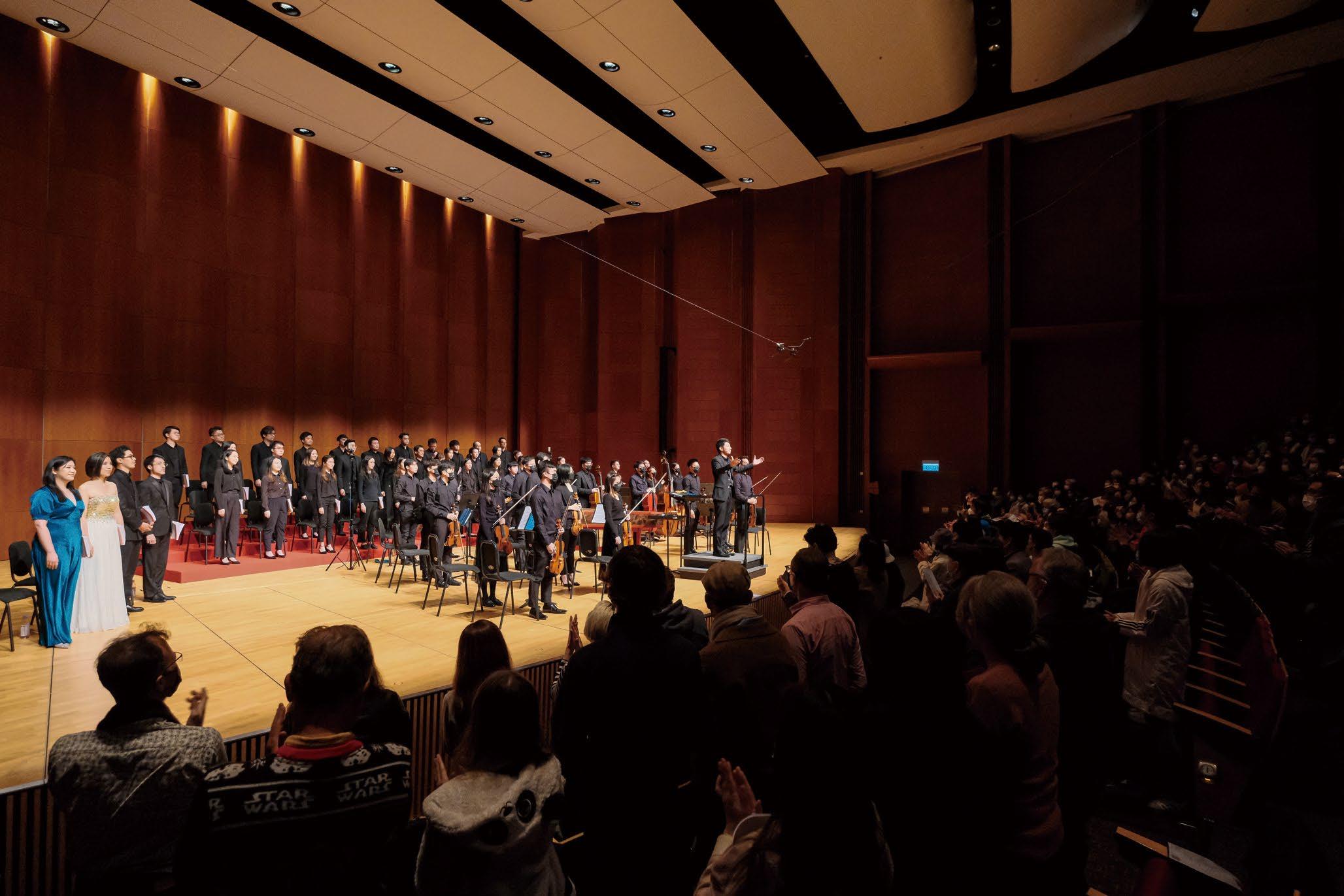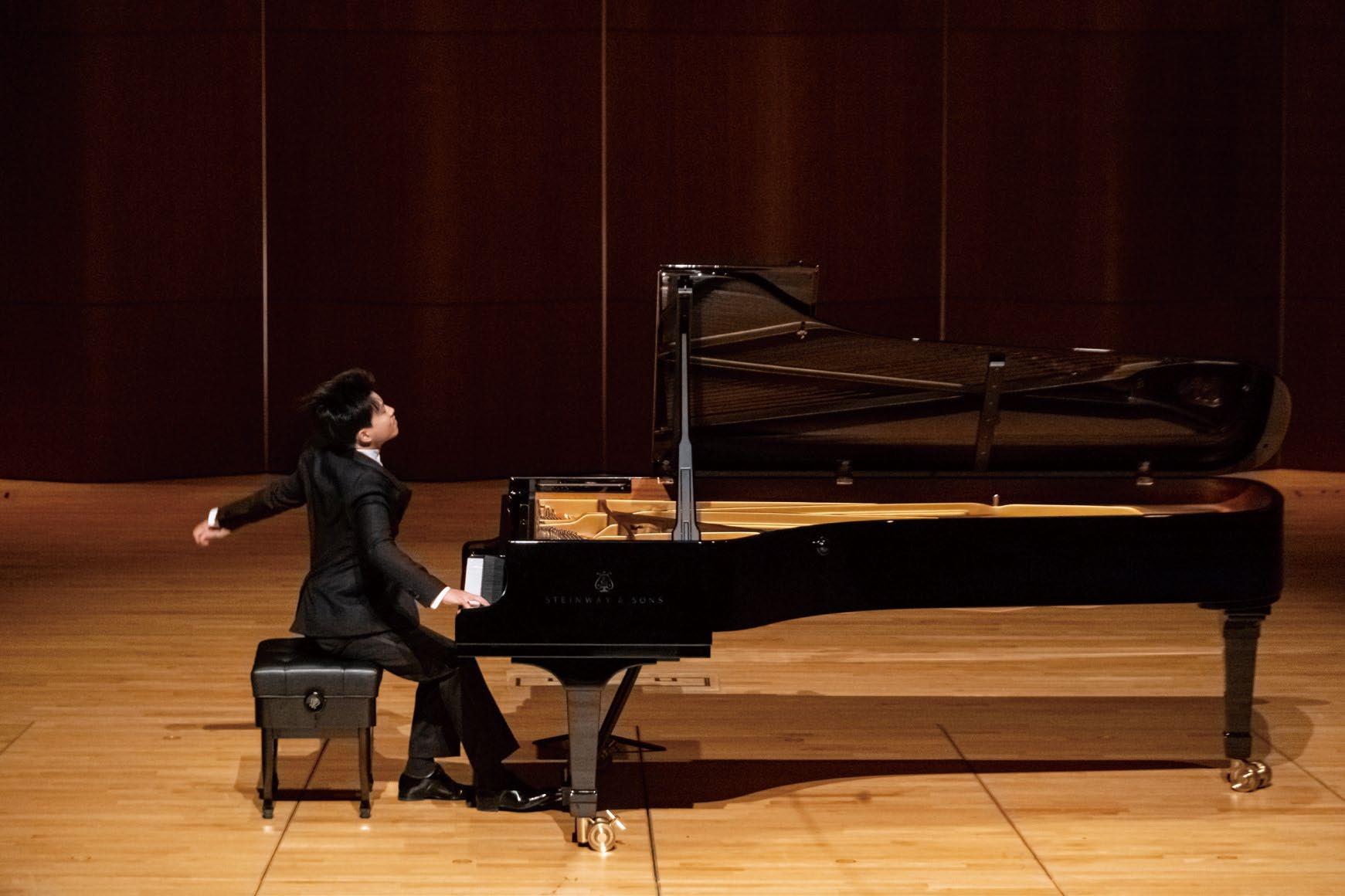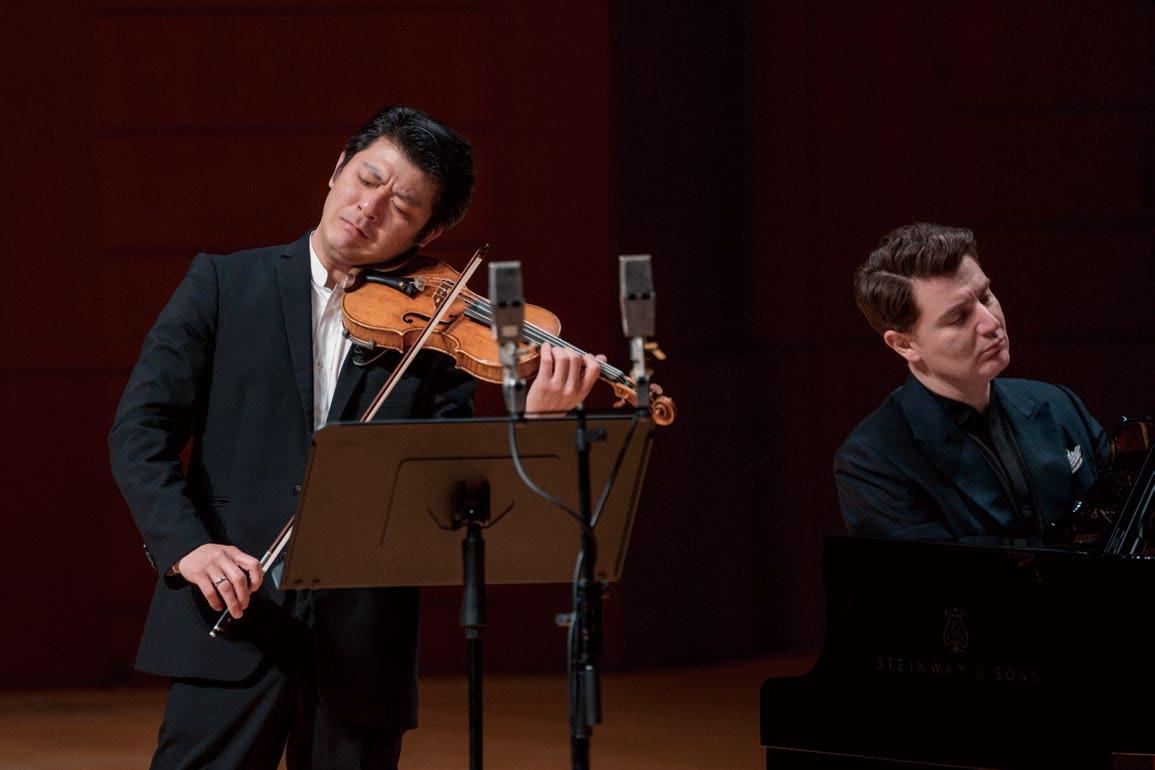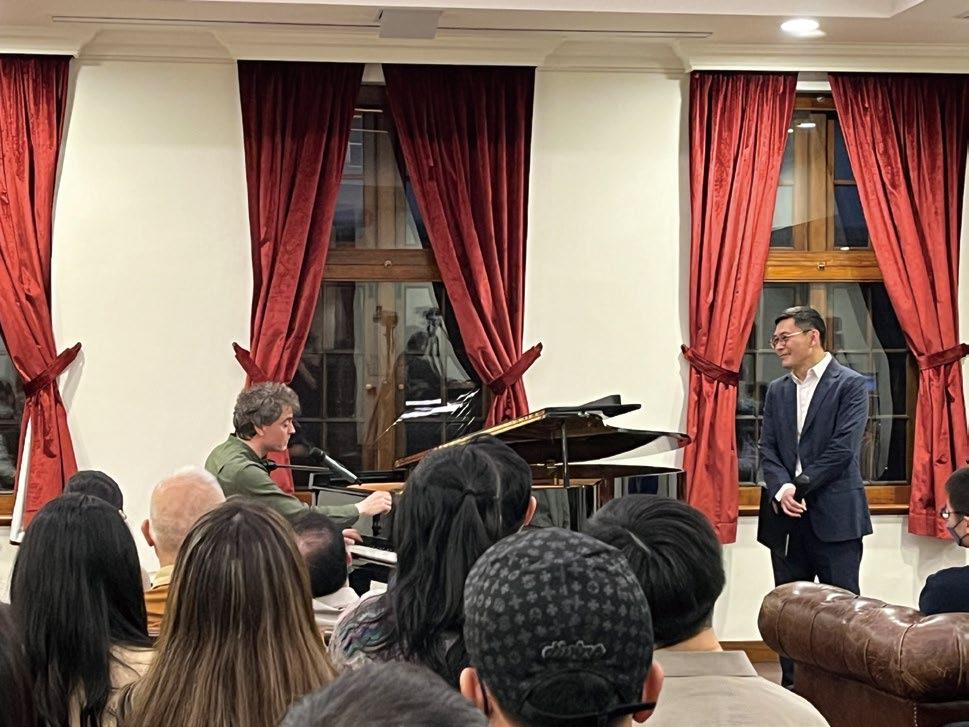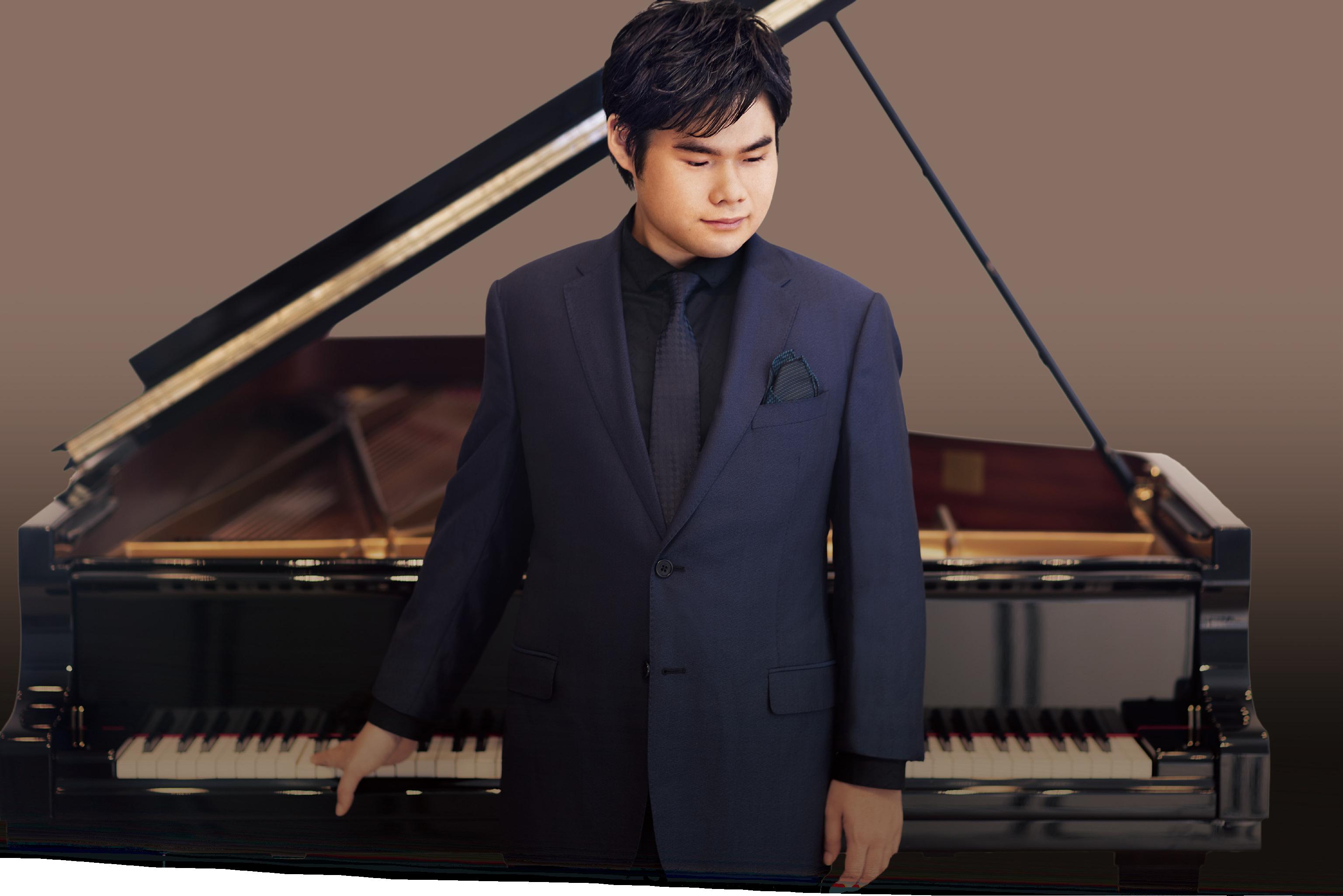


Welcome to the Grand Hall
Thank you for coming to this HKU MUSE event. To ensure that everyone enjoys the music, please switch off your mobile phones and any other sound and light emitting devices before the performance. Unauthorised photography and audio/video recordings in the Hall are prohibited. Enjoy the concert and come again.
Presented by
Supported by
us
Follow
10 JUN 2023 | SAT | 8PM
Grand Hall, The University of Hong Kong
Nobuyuki Tsujii, piano
BEETHOVEN Piano Sonata No. 14 in C-sharp minor, Op. 27, No. 2, 'Moonlight'
Adagio sostenuto
Allegretto
Presto agitato
LISZT Consolation No. 2 in E major, S. 172
LISZT Venezia e Napoli, S. 162
Gondoliera
Canzone
Tarantella
- INTERMISSION -
RAVEL Menuet sur le nom d'Haydn
RAVEL Pavane pour une infante défunte
RAVEL Jeux d'eau
KAPUSTIN Eight Concert Etudes, Op. 40
No. 1 Prelude
No. 2 Reverie
No. 3 Toccatina
No. 4 Reminiscence
No. 5 Shuitka (Raillery)
No. 6 Pastoral
No. 7 Intermezzo
No. 8 Finale
Today's concert is recorded by RTHK Radio 4. Broadcast details will be announced later.
Nobuyuki Tsujii
Japanese pianist Nobuyuki Tsujii (Nobu), who has been blind from birth, won the joint Gold Medal at the Van Cliburn International Piano Competition in 2009 and has gone on to earn an international reputation for the passion and excitement he brings to his live performances.
Nobu has appeared in concert with leading orchestras worldwide including Mariinsky Orchestra, Philharmonia, BBC Philharmonic, NHK Symphony, Yomiuri Nippon Symphony, Tokyo Symphony and Japan Philharmonic orchestras, Seattle and Baltimore Symphony Orchestras, Filarmonica della Scala, and the Sinfonieorchester Basel under the baton of conductors such as Valery Gergiev, Vladimir Ashkenazy, Vladimir Spivakov, Juanjo Mena, and Vasily Petrenko. Nobu's past appearances as a recitalist have seen him perform at prestigious venues across the world such as Carnegie Hall's Stern Auditorium, the Théâtre des Champs Elysées in Paris, the Wigmore Hall and Royal Albert Hall in London, the Berlin Philharmonie, and Vienna's Musikverein.
Following a summer season that included critically acclaimed appearances with Los Angeles Philharmonic at the Hollywood Bowl, at the Verbier Festival, the Snape Maltings Proms, Biarritz Piano Festival, Musica Mundi Festival, and the Festival de Menton, Nobu's 2022/23 season sees him perform recital programmes at Carnegie Hall, London's Queen Elizabeth Hall, Birmingham Town Hall, and the Liverpool Philharmonic Hall. Nobu also features as a concerto soloist with Royal Liverpool Philharmonic Orchestra under Domingo Hindoyan, the Royal Philharmonic Orchestra under Vasily Petrenko, the Seattle Symphony Orchestra under Jiri Rozen, the Sarasota Orchestra, and the Bilbao Symphony Orchestra, in addition to numerous solo and concerto appearances across his native Japan. Earlier seasons have seen Nobu work with Philharmonisches
Staatsorchester Hamburg under Kent Nagano and the NDR Radiophilharmonie Hannover under Andrew Manze. He received critical acclaim for his recitals at the Amsterdam Concertgebouw and the Théâtre des Champs Elysées, as well as his debut with Oslo Philharmonic Orchestra.
An exclusive recording artist for Avex Classics International, Nobu's growing album catalogue encompasses the breadth of the piano concerto repertoire.
2
As of the start of the 2021/22 season, it includes Chopin's Piano Concerto No. 2 with Vladimir Ashkenazy and Deutsches Symphonie-Orchester Berlin, Grieg's Piano Concerto and Rachmaninov's Variations on a Theme of Paganini under Vasily Petrenko with Royal Liverpool Philharmonic Orchestra, Rachmaninov's Piano Concerto No. 2 with Deutsches Symphonie-Orchester Berlin, Tchaikovsky's Piano Concerto No. 1 with Yutaka Sado and BBC Philharmonic, Beethoven's Piano Concerto No. 5 with Orpheus Chamber Orchestra. Nobu has also recorded several recital programmes of Chopin, Mozart, Debussy, and Liszt.
A live DVD recording of Nobu's 2011 Carnegie Hall recital was named DVD of the Month by Gramophone, as was his latest DVD release, Touching the Sound—The Improbable Journey of Nobuyuki Tsujii , a documentary film by Peter Rosen.
Nobu's international tours are supported by All Nippon Airways (ANA) and he gratefully acknowledges their assistance.
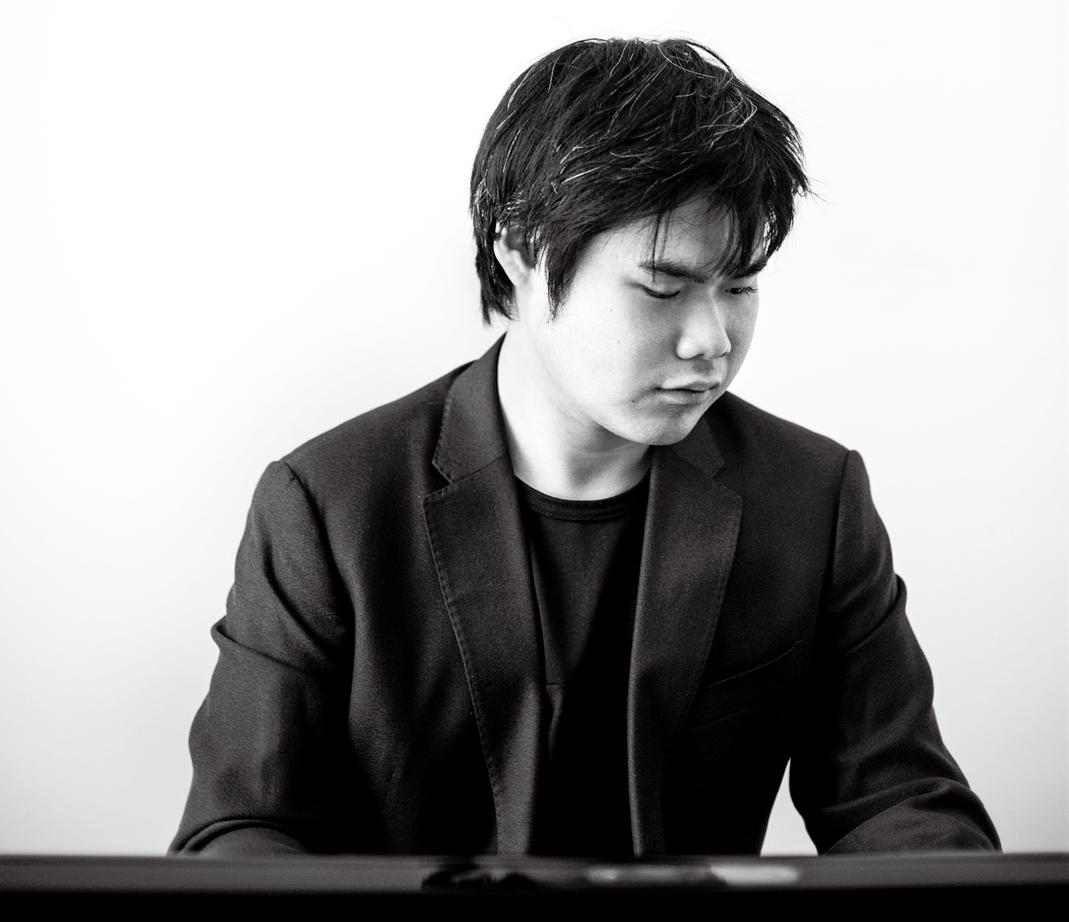
3
© Giorgia Bertazzi
Piano Sonata No. 14 in C-sharp minor, Op. 27, No. 2, 'Moonlight'
LUDWIG VAN BEETHOVEN (1770-1827)
Composed in 1801, the 'Moonlight' sonata is one of the Western classical works that has successfully lied: its sobriquet 'Moonlight' does not originate from Beethoven, but from the German critic and poet Ludwig Rellstab (1799-1860), who described the first movement as "a vision of a boat on Lake Lucerne by moonlight". Beethoven had never been to Lake Lucerne in Switzerland, nor had he heard of the nickname of his own sonata during his lifetime; in fact, he dedicated his three-movement sonata to his 16-year-old student and lover, Countess Giulietta Guicciardi, whose father forbade their potential marriage. But 'Moonlight' seems to fit the dream-like, almost hypnotic character of the first movement so perfectly that its origins and Beethoven's intentions hardly matter. The nickname has been so powerful that it has overshadowed Beethoven's formal experiment. Rather than conforming to the normative fast-slow-fast structure, the sonata gives considerable weight to its third movement in its structural acceleration: it is couched in a slow-moderately fast-very fast form. The 'Moonlight' label has refashioned this end-weight structure, tilting the structural emphasis towards the first movement.
There is, too, a theory that betrays the implications of the sonata's nickname. It is believed that there is a manuscript by Beethoven in Vienna which contains a passage from Mozart's Don Giovanni, taken from the scene where Don Giovanni has murdered the Commendatore. Beethoven, it is claimed, transposed the passage from D major to C-sharp minor—a half step lower. This anecdote has led various Beethoven aficionados to claim that the sonata has nothing to do with the romance under the moonlight. Instead, the sonata, they say, is a solemn dirge.
But let's try to listen differently in Beethoven's then impaired hearing. In the first movement, we can barely hear any dynamics because the volume is subdued and constantly pulled back to pianissimo . We cannot hear the melody soar beyond high E. Even the crescendi only lead us to piano . The third movement articulates the other extreme: very often the dynamic changes from piano to forte in a blink, as if Beethoven was anxiously fumbling with the keyword and experimenting the limits of his own hearing. Whether this musical representation reflects Beethoven's impaired auditory world is open to interpretation, but the music seems to invite us into a world where listening becomes a luxury, a quasi una fantasia, rather than a given.
4
Consolation No. 2 in E major, S. 172
Venezia e Napoli, S. 162
FRANZ LISZT (1811-1886)
Beethoven's rage necessitates Liszt's consolation. Musically, I mean: Beethoven's fiery ending in his C-sharp minor sonata finds solace in its relative major in Liszt's lyrical Consolation No. 2. Composed between 1849 and 1850, the Consolations are a set of six solo piano compositions, referred to as Six pensées poétiques (Six Poetic Thoughts) by the Bureau Central de Musique in Paris. Liszt was presumably inspired by the title of the French literary critic and poet Charles Augustin SainteBeuve's collection of poems Les Consolations from 1830, which explored themes of unfulfilled hope. Consolation No. 2 is a musical response to these themes. It is not consolation itself, but the search for consolation. The piece is characterised by the recycling of the opening theme in various harmonic hues and pianistic textures bound by eight-measure phrases. The music can at times offer a sense of promise and hope, with dominant-to-tonic resolutions prompting a feeling of emotional release. At other times, however, these hopes may be shattered as the music takes unexpected turns and shades into other tonal regions to prolong the journey towards consolation.
Liszt and Tsujii will then transport us from the piquant French lyricism in Consolation to the multifaceted Italian folklorisms in Venezia e Napoli , a supplement to the second volume of Liszt's collection of suites Années de Pèlerinage (Years of Pilgrimage, 1842). The title says it all: Venice and Naples, two cities in Italy. Liszt, in fact, gave the same title to two different works. S. 159 was composed in 1838-40, while S. 162—the one we are hearing today— was composed in 1861. While there are notable thematic differences between the two versions, it is believed that Liszt based both versions on Venetian and Neapolitan pieces by, most notably, Rossini and Donizetti, which he frequently transcribed. The second version comprises three parts: Gondoliera, Canzone, and Tarantella . Precisely which Italian songs had inspired Liszt has been a mystery. But what is certain is that we can hear in Gondoliera how Liszt transformed a barcarole (a song usually sung by Venetian gondoliers) and its typical 6/8 metre into a virtuosic pianistic idiom. Canzone , Italian for 'song', is saturated with ominous tremolos, and reminds us of Rossini's Canzone del Gondoliere—'Nessun maggiore dolore' from his opera Otello , which recalls Dante's journey through hell in Inferno Tarantella brings our feet back on earth in an ebullient, boisterous dance embroidered by a sensuous song with an arabesque of ornamentation.
5
Menuet sur le nom d'Haydn
Pavane pour une infante défunte
Jeux d'eau
MAURICE RAVEL (1875-1937)
While it may appear that we are traveling chronologically from Beethoven to Liszt and then to Ravel, Ravel's Menuet sur le nom d'Haydn, written in 1909, takes us back to the memory of Haydn. Alongside Claude Debussy, Vincent d'Indy, Paul Dukas, Reynaldo Hahn, and Charles-Marie Widor, Ravel was commissioned by the Revue musicale mensuelle de la Société Internationale de Musique (RSIM) to write a piano piece commemorating the 100th anniversary of Haydn's death. This form of commemoration is an old French tradition called tombeau (tomb or tombstone), which serves two purposes: first, to honour the memory of the departed, and second, to express the composer's grief for the deceased through their art. In other words, the composer must combine their understanding of Haydn with their own musical style. What Ravel did was to etch Haydn's name into a French musical graveyard. Ravel used a five-note motif, B, A, D, D, G, to construct the overarching theme, which translates into H (the German nomenclature for B-natural) - A naturalY (if musical alphabets cycle through letter alphabets, then Y is D-natural) - D natural - N (G-natural following the cycle). As we can imagine, G major is a very efficient key to this motive. The theme appears right at the beginning, interwoven into the musical fabric in various voices, and dutifully bookends the piece.
The evocation of nostalgia continues, in the same key, with Ravel's Pavane pour une infante défunte (Pavane for a Dead Princess). Written in 1899 when Ravel was studying with Gabriel Fauré at the Conservatoire de Paris and dedicated to his patron, Princesse de Polignac, the piano work conjures up, as Ravel said, "a pavane that a little princess once might have danced at the Spanish court". The pavane is a slow processional dance that originated in 16th-century Italy, but it is also commonly associated with the Spainish court. While Ravel intended the piece to be played extremely slowly, he once cautioned the French musician Charles Oulmont that the piece was not 'dead pavane for a princess', but 'pavane for a dead princess', although elsewhere Ravel claimed that the title bore little relation to its content. Ravel later published an orchestral version of Pavane in 1910, which used two flutes, an oboe, two clarinets, two bassoons, two horns, harp, and strings. Imagine the orchestral soundscape channelled through the piano: the opening theme being played by two hand-horns in G, followed by strings and oboes, punctuated by the harp.
6
With Ravel's Jeux d'eau (1901), translated variously as 'Fountains', 'The Play of Water', or 'Water Features', the theme of nostalgia persists. But it does not point externally to other composers, but internally to today's programme. On the one hand, Ravel was inspired by the pianistic texture, virtuosity, and the glass-like quality in Liszt's Les Jeux d'eaux à la Villa d'Este (The Fountains of the Villa d'Este) in Années de Pèlerinage. On the other hand, Ravel adopted a quasi-sonata form in Jeux d'eau that calls into mind Beethoven's uncanny manipulation of the form in his 'Moonlight' sonata. It might not be unproductive, given today's programme, to think of the rippling pianistic effect and the cascading notes in Jeux d'eau as Rellstab's fantasy of Lake Lucerne by moonlight.
Eight Concert Etudes, Op. 40
NIKOLAI KAPUSTIN (1937-2020)
Time can do another stretch. Kapustin was born in Horlivka, Ukraine and was a composer and jazz pianist of Russian-Jewish descent. He studied at the Moscow Conservatory with Alexander Goldenweiser in 1956-61, and was known as a composer who fused together classical forms and jazz idioms. The eight Etudes are a transfixing journey. Under the shadows of Liszt, Lyapunov, Gershwin, and Scriabin, Kapustin's own voice shines through with his stylistic eclecticism. While Beethoven's 'Moonlight' is an experiment of hearing, Kapustin's Etudes are an experiment of what the piano can afford. From free jazz to boogie-woogie, from Chopinesque pianistic figurations to American musical theatre, Kapustin's Etudes are written-out improvisations on the keyboard that challenge the possibilities of concert music seriously, with magical dexterity.
Programme
notes by
Edwin Li BA in Music, HKU PhD in Music Theory, Harvard University
7
M U S E G A L A
On FIVE consecutive weekends in June, select 'MUSE at 10' celebration concerts will be on RTHK4 'Live on 4'! Mark your calendar and revisit these unforgettable MUSE moments!
BROADCAST SCHEDULE
2 & 3 JUN
Schubert's Piano Sonatas with Paul Lewis


9 & 10 JUN
Gavriel Lipkind: The Complete Bach Cello Suites
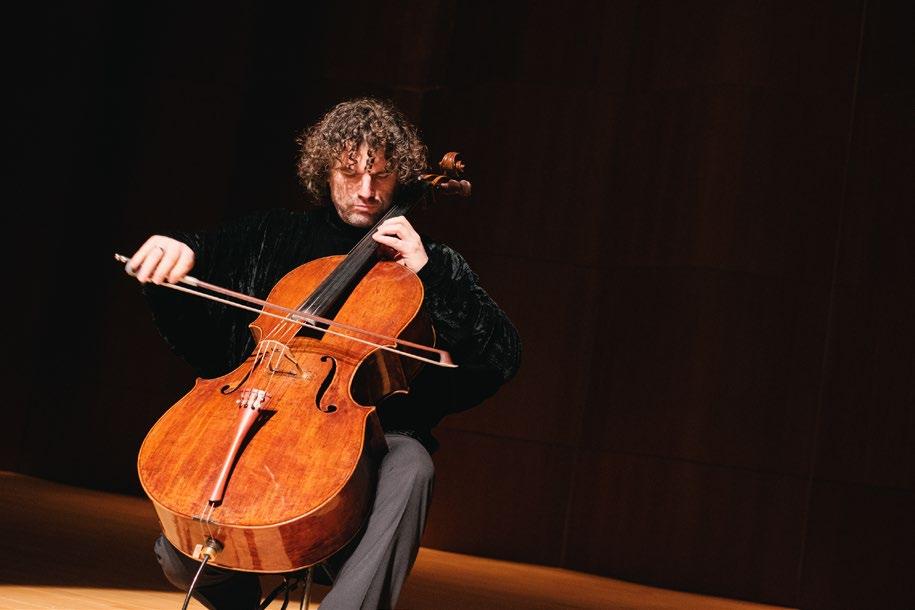
16, 17, 23, 24 JUN




Russian Piano Classics I-IV

30 JUN




Berlin Phil Concertmaster Daishin Kashimoto & Alessio Bax
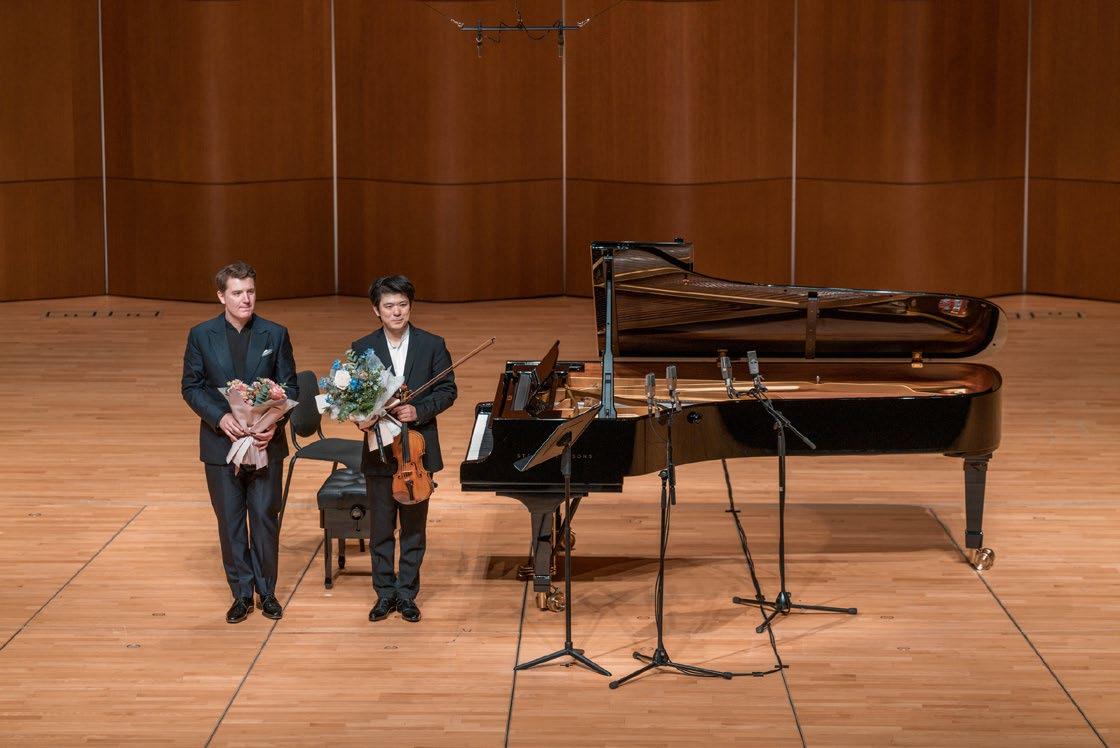
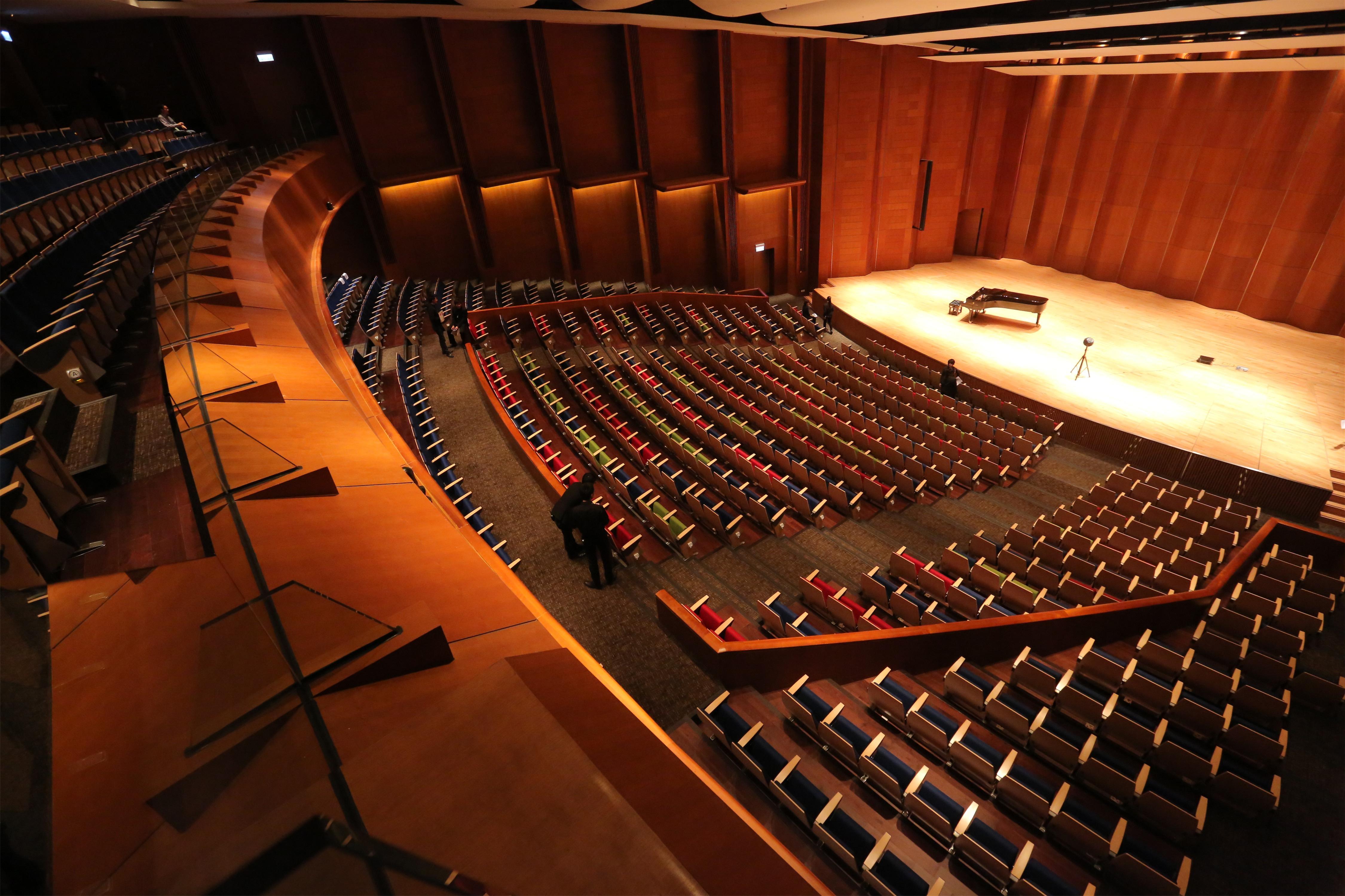
R T H K R A D I O 4 ⾹港電台第四台 FM 97.6 - 98.9 繆思
殿堂
HKU MUSE 10 Years
In the last 10 years, MUSE has amused, bemuse and confused the standard practices in concert presentations, bringing new ideas and energies to the cultural offering in Hong Kong. In doing so, it has raised the University as a major force in cultural leadership, and as a cultural hub for the HKU community and friends. Most of all, MUSE has been a muse for many: inspiring us to explore, create, and think more deeply. MUSE has made the Grand Hall, with its astounding acoustics, a cultural home, a cultural lab, and a living room that lives and breathes live music anew. There are
‧ MANY DEBUTS, such as Berliner Barock Solisten, Khatia Buniatishvili, Jeremy Denk, LENK Quartet, Yunchan Lim, Jan Lisiecki, NOĒMA, Nobuyuki Tsujii, Zhu Xiao-mei;
· MANY FIRSTS, such as the release of Beethoven 32 Sonatas Vinyl and CD boxsets with Alpha Classics, the publishing of In Time with the Late Style book with Oxford University Press, and the launch of Around Twilight LectureDemonstration and the Music in Words podcasts;
· MANY RETURNING STARS, such as Angela Hewitt, Paul Lewis, Konstantin Lifschitz, Jean Rondeau, and Takács Quartet;
· MANY NEW WORKS by HKU composers, such as Anthony Au, David Chan, Owen Ho, Austin Leung, Peter Tang, Kiko Shao, and Jing Wang;
· MANY STUDENT ENGAGEMENTS, such as writing programme notes, performing alongside professional musicians, and gaining practical art administration experience;
· MANY IN-DEPTH EXPLORATIONS on monumental works, such as the complete cycle of Beethoven Violin Sonatas, Bartók String Quartets, Bach Well-Tempered Clavier, Schubert Piano Sonatas, and Schubert Song Cycles;
And, most importantly, there are many collaborations and amazing moments that will always be treasured by our audiences. What's your unforgettable MUSE moment? That's why we are here—to make the invaluable possible. So as we celebrate our 10 th anniversary, be a muse for us in whatever way you can to encourage MUSE for years to come.
Prof. Daniel Chua
於2013年啟用的李兆基會議中心大會堂是港大百週年校園的亮點建築,原址為 水務署的配水庫,服務港島各區超過半世紀。「繆思樂季」與大會堂同步誕生, 致力令這個具備美妙音響效果的場地成為普羅大眾樂意踏足,並不時流連忘返的 「知識庫」。
「繆思樂季」起步之初即另闢蹊徑,朱曉玫的《哥德堡變奏曲》(2014)、呂培原的琵 琶古琴演奏會(2014),至今仍為樂迷津津樂道。往後列夫席茲的貝多芬鋼琴奏鳴曲 全集(2017)、休伊特的巴赫平均律鍵盤曲集(2018)、以及近年塔克斯四重奏的巴爾 托克全集(2019),均開風氣之先,提供現場聽全某一整卷音樂經典的機會,一新觀 眾耳目。其中,列夫席茲八場音樂會的現場錄音,「繆思樂季」還與Alpha Classics 合作,發行了全球限量版的黑膠和鐳射唱片(2020)。
推廣知識交流是大學的使命,「繆思樂季」除了在節目策劃上與音樂系合作無間,還 不時邀請系內老師與樂手或嘉賓以對談、導賞、示範講座等形式,將相關的人文知 識一點一滴、深入淺出介紹給觀眾,冀能做到寓教於樂,與眾同樂。
但「繆思樂季」的合作對象並不囿於港大校園。樂評人如臺灣的焦元溥博士、加拿大 的邵頌雄教授、本地的李歐梵教授,都是「繆思樂季」的好伙伴。焦博士的「音樂 與文學對話」系列(2018, 2019, 2020)固然是寓教於樂的好例子。邵教授先獨家專 訪朱曉玫,為她 2014年的演奏會作鋪墊;隨後在「人文 ‧ 巴赫」(2015)與李教授 暢談巴赫創作中的人文思想。兩位教授的對談往後還發展出一本文集《諸神的黃昏》, 由「繆思樂季」策劃,牛津大學出版社出版(2019)。
說到與眾同樂,不能不提2017年推出的「眾聲齊頌《彌賽亞》」。這個每次由不同 的本地指揮、樂手、歌唱家與觀眾普天同慶的活動,已是不少熱愛合唱的樂迷每年 臨近聖誕翹首以待的節目。
過去三年疫情肇虐,看著精心策劃的節目不得不一個接一個取消,「繆思樂季」的團隊 並沒有因此而氣餒,還隨即變陣,陸續推出推介本地年輕音樂家的「薄暮樂敘」示範 講座(2020, 2021, 2022)、與香港管弦樂團合辦的「聚焦管弦」室樂系列(2021, 2022, 2023)、梅湘四重奏首演80週年系列(2021),還有與美國巴德音樂學院、M+博物館 共同籌劃的《水墨藝術與新音樂》中西混合室內樂創作交流項目(2021, 2022)。
「繆思樂季」今年剛滿十歲,但它不會以原來配水庫的「服務超過半世紀」為限。 因為,十年樹木,百年樹人,像「繆思」這樣的一個樂季,十年,只是一個開始。
陳慶恩教授
十年樂事:像「繆思」這樣的一個樂季

